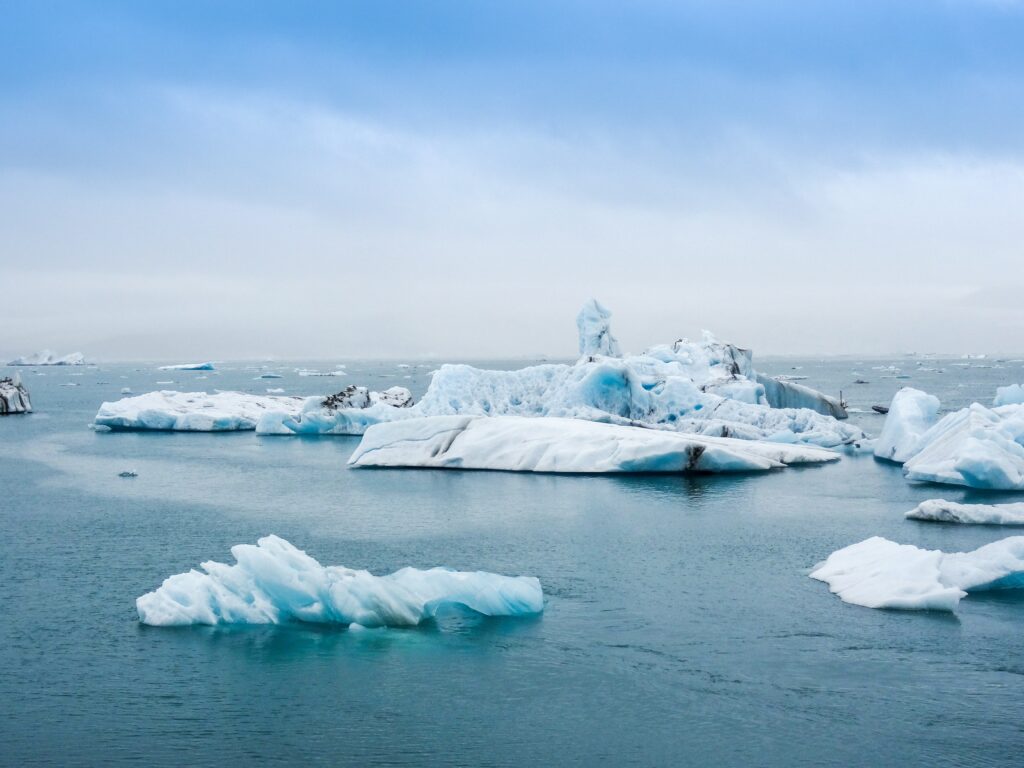Climate change, food security and biodiversity are some of our times largest and most pressing issues, and the three elements are very closely related. So, a solution in one of these areas can affect the two others. We take a closer look at Greenland’s Glacial Rock Flour which could offer a solution to regenerative agriculture.
Climate change and agriculture are interrelated processes. The role of the agriculture sector in greenhouse gas (GHG) emissions is well known but not well understood. More than one-quarter of the world’s GHG emissions come from agriculture, forestry, and land-use change. And unless actively addressed, these emissions are likely to increase as our planet’s population and the need for food continue to increase. Conversely, climate change can significantly impact agriculture as well owing to drought, flooding, heatwaves, and pests, for example. Climate change can also impact soil fertility, food security and biodiversity, and the availability of irrigation water and agricultural land.
While the potential impact of the agricultural sector on climate change and vice versa is evident, discoveries and innovations across the world help continue to help mitigate and minimise the negative impacts of climate change and agriculture on one another.
“If you look at it from a biodiversity perspective, it means that you could produce more food in the same area,” says Prof. Minik Rosing, Professor in Geology, University of Copenhagen. “And in some cases I believe we can increase the forest areas”.
Case Study: Greenland’s Glacial Rock Flour offers a solution to regenerative agriculture
One such discovery is Greenland’s Glacial rock flour. With melting glaciers, the rocks crushed to nano-particles by the weight of the retreating ice sheet, deposits roughly one billion tonnes of the silt, known as glacial rock flour, per year, on the world’s largest island. This is an emerging paradox, wherein the glacial rock flour, a by-product of melting glaciers as a result of climate change and global warming, could help mitigate the effects of this very phenomenon.
Professor Minik Rosing, Professor in Geology, University of Copenhagen, and his team, have established that the nutrient-rich mud boosts agricultural output when applied to farmland and absorbs carbon dioxide from the air in the process. The Copenhagen team have worked with teams in Sao Paulo, Brazil and the University of Ghana, and have managed to increase maize yields by 30% using glacial rock flour to offset the impact of rain and heat on poor tropical soils.
The nano size and mineralogy of the silt’s particles is what allows plants more access to nutrients including potassium, magnesium and silicon compared to normal soil particles. Rosing and his team have documented that the silt works, and in the mentioned research in Ghana, they have tested it over five growth seasons
Therefore his research now focuses on
- How long does it work?
- What are the most optimal circumstances for the mud to work, what types of crops can benefit mostly from the use and how much should be used.
The Novo Nordisk Foundation has supported this part of the research, and Prof. Rosing welcomes other parties to support other aspects of the research.
Carbon Emission accounting
The scientists are also developing a method to document the carbon emission uptake effect, so more precise life cycle analysis can be concluded.
Tests have indicated that one tonne of glacial rock flour can absorb between 250 and 300 kilograms of CO2 when applied to fields, potentially allowing farmers to sell that as carbon credits.
The key in this process is the tiny size of the silt’s particles as they help speed up a natural process whereby rocks absorb CO2. When the silt dissolves in rainwater and releases its nutrients, it undergoes a chemical reaction that locks in carbon dioxide from the atmosphere. The solution is then washed out with drainage water and eventually deposited on the seabed as carbonate minerals.
As for the documentation of the glacial rock flour being carbon neutral the expectation is that the team have a few years of research in front of them to be able to document the carbon emission accounting method.
Food and biodiversity
“Success at scale could improve food security and economic imbalances partly caused by an uneven distribution of good quality farmland across the world” says Prof. Rosing.
Geological surveys show that the best farmland, which stretches across parts of North America and Europe, mark the margins of the ice sheets during the last ice age. As is happening in Greenland today, the thick layer of ice grounds the rocks and revitalises the soil.
“In Northern Europe, we think the reason we’re better off than the rest of the world is that we are so much smarter than everyone else. In fact, we just have better soil under our rubber boots,” Prof. Rosing said.
The volume of one billion ton of new deposition of silt each year is made as the in-land ice with its thickness of 3,000 metres gives an enormous pressure underneath that reaches the underlay, and extremely fine particles from the underlay are washed out with the meltwater. Due to the low temperatures and the rapid deposition, the silt in the large deposits is sealed and therefore not active in the Arctic environment.
Therefore, in Greenland the ecosystem will not experience a substantial negative impact, hence by industrialising the glacier rock flour, companies would not tap into a source that is important to the greenlandic ecosystem.
In the sub-tropical and tropicals the silt becomes active, and the scientists have measured that it contains no ecologically problematic organisms or heavy metal concentrations.
“The documentation also indicates a low environmental impact here, but there will of course always be an impact, as we are aiming to change a current situation” says Prof. Rosing
Scaling glacial rock flour
Scaling the use of the slit from a pilot phase to an actual production will need partners who will take on the product development, and find the best solutions for packaging and transporting the silt.
“We need partners that can scale and commercialise the production” says Prof. Rosing.
Greenland’s Ministry of Mineral Resources is very well geared to govern the exploitation of this resource. The hope for all involved parties is to achieve more equality for farmers and economic prosperity in the South. For Greenland the hope is that by exporting the silt, the country can strengthen its position as a relevant partner for the rest of the world, and project soft power for the bridge building between the North and the South.
Conclusion
The idea of applying finely-grained rock to farmland is not new and several studies have shown that by-products from mines or quarries can improve soil quality. And the method has gained interest due to the added benefit of absorbing CO2.
Similarly, a study led by David Beerling, professor at the University of Sheffield, found that spreading crushed basalt on fields not only helps crops grow, but also removes CO2 from the atmosphere, and boost climate-friendly farming.

Charlotte Vang Gregersen
Charlotte is a member of Ksapa's Community of Experts. She's an experienced Strategic Impact Advisor with a demonstrated history of working in the renewable industry and an international contact base spanning industry, private capital, central & local government and academia. With an expertise in business development, she's a strong entrepreneurship professional who graduated from The London School of Economics and Political Science (LSE).


